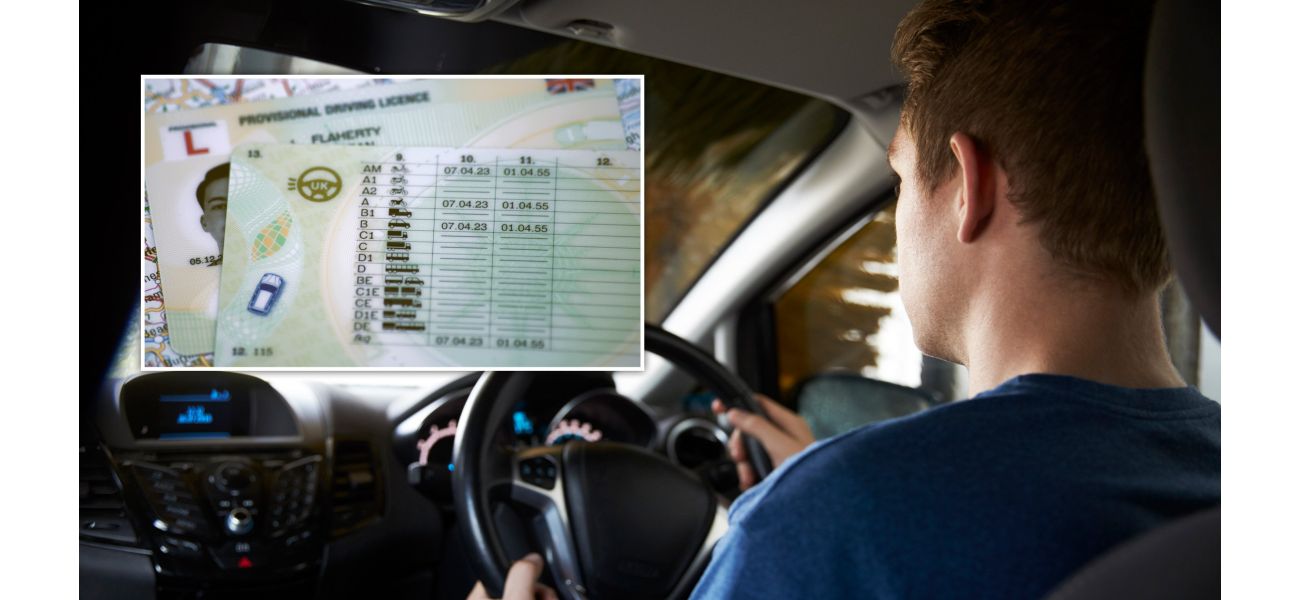Driver has high points on their licence but has not yet faced suspension.
Britain has 10,000 repeat offenders driving on its roads.
November 5th 2024.

It's hard to believe, but there is a driver out there with a whopping 176 points on his driving licence and he's still on the road. This young man, who is in his twenties, is just one of 10,000 habitual offenders who are causing chaos on our roads. According to data from the Driver and Vehicle Licensing Agency (DVLA), this is a concerning trend that has been denounced as "shocking" by a leading road safety charity. They argue that these drivers should be required to undergo additional training in order to improve their driving skills.
Among the 10,000 drivers who have repeatedly broken the law, there are three men with over 100 points on their licence. The highest female offender is a 50-year-old woman with 96 points, and there are 53 other individuals who have accumulated at least 30 points on their licence. What's even more surprising is that these individuals have not been banned from driving yet, despite the fact that points are issued for serious offences such as driving without due care and attention, drink-driving, and speeding.
Under the totting-up system, drivers are usually banned for six months if they receive 12 or more points within a three-year period. However, there is a loophole that allows them to appeal to the court for an exception if they can prove that losing their licence would result in exceptional hardship, such as impacting their ability to work or care for their family. As a result, over 10,000 drivers are still legally allowed to drive even though they have accumulated 12 or more points on their licence.
Nicholas Lyes, director of policy and standards at road safety charity IAM RoadSmart, expressed concern over these statistics, stating that it may be time to re-evaluate the definition of "exceptional hardship." He believes that all drivers who reach the 12-point mark should be required to undergo additional training, regardless of whether they are allowed to keep their licence or not. This would not only improve their driving skills, but also serve as a deterrent for future offences.
What's even more concerning is that points can remain on a licence for up to 11 years after an offence is committed. This means that some individuals with multiple driving convictions are still legally allowed to drive because they have served their disqualification period. As of September 14, the highest female offender has 96 points on her licence, but it's unknown how many drivers have avoided a ban despite reaching the 12-point threshold.
Steve Gooding, director of motoring research charity the RAC Foundation, believes that there should be more transparency in the system to ensure that the right balance is being struck between personal mobility and public safety. He also believes that the exceptional hardship rule should truly be reserved for exceptional cases. However, the DVLA clarifies that they have no influence over sentencing and can only record the information provided by the courts. They do, however, contact the relevant court to confirm that a disqualification was not imposed when the 12-point threshold is reached.
In conclusion, it's concerning to see that there are so many drivers on the road who have repeatedly broken the law and have not faced any consequences. It may be time to review the exceptional hardship rule and implement stricter measures, such as mandatory additional training, to improve road safety.
Among the 10,000 drivers who have repeatedly broken the law, there are three men with over 100 points on their licence. The highest female offender is a 50-year-old woman with 96 points, and there are 53 other individuals who have accumulated at least 30 points on their licence. What's even more surprising is that these individuals have not been banned from driving yet, despite the fact that points are issued for serious offences such as driving without due care and attention, drink-driving, and speeding.
Under the totting-up system, drivers are usually banned for six months if they receive 12 or more points within a three-year period. However, there is a loophole that allows them to appeal to the court for an exception if they can prove that losing their licence would result in exceptional hardship, such as impacting their ability to work or care for their family. As a result, over 10,000 drivers are still legally allowed to drive even though they have accumulated 12 or more points on their licence.
Nicholas Lyes, director of policy and standards at road safety charity IAM RoadSmart, expressed concern over these statistics, stating that it may be time to re-evaluate the definition of "exceptional hardship." He believes that all drivers who reach the 12-point mark should be required to undergo additional training, regardless of whether they are allowed to keep their licence or not. This would not only improve their driving skills, but also serve as a deterrent for future offences.
What's even more concerning is that points can remain on a licence for up to 11 years after an offence is committed. This means that some individuals with multiple driving convictions are still legally allowed to drive because they have served their disqualification period. As of September 14, the highest female offender has 96 points on her licence, but it's unknown how many drivers have avoided a ban despite reaching the 12-point threshold.
Steve Gooding, director of motoring research charity the RAC Foundation, believes that there should be more transparency in the system to ensure that the right balance is being struck between personal mobility and public safety. He also believes that the exceptional hardship rule should truly be reserved for exceptional cases. However, the DVLA clarifies that they have no influence over sentencing and can only record the information provided by the courts. They do, however, contact the relevant court to confirm that a disqualification was not imposed when the 12-point threshold is reached.
In conclusion, it's concerning to see that there are so many drivers on the road who have repeatedly broken the law and have not faced any consequences. It may be time to review the exceptional hardship rule and implement stricter measures, such as mandatory additional training, to improve road safety.
[This article has been trending online recently and has been generated with AI. Your feed is customized.]
[Generative AI is experimental.]
0
0
Submit Comment





